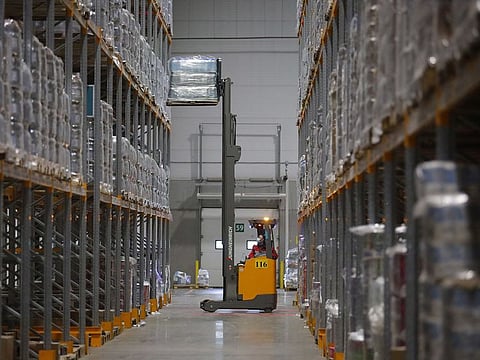Why UAE ecommerce market can do with more ‘dark stores’
Dark stores’ presence across key city locations can help deliver q-commerce in minutes

The q-commerce market in MENA is poised to reach $47 billion by 2030. Deliveries as fast as under 15-minutes come as no surprise as bigwigs enter the ecosystem. According to estimates, the online grocery market in the UAE could generate $1.6 billion by end of this year.
This presents fantastic growth opportunities for the sector, as what’s currently available to shop online is 7.8 per cent of the country’s total grocery sector. Hence, a booming ecommerce, a massive addressable market, and faster delivery expectations are redefining the Middle East’s shopping landscape.
Businesses are bringing inventory closer to the customer to expedite order fulfillment and deliver on wafer-thin delivery SLAs (Service Level Agreement). This leads us to the significance of dark stores.
Dark stores are micro-fulfillment centers strategically placed closer to high population density areas. When inventory is near the customer, it is easier for businesses to process and deliver orders within even minutes. It differs from a warehouse based on its location, size, and operations economics, while not being open to the public sets it apart from a commercial storefront that attracts footfalls.
But a strategic placement of the distribution center and inventory alone isn’t enough. What follows next is a more complex part that necessitates tech deployment.
Augmenting dark stores
A store’s ability to deliver on time depends upon multiple factors, such as the availability of goods, how fast the order gets pushed into the system, how soon the order is sorted and packed, and how quickly the rider picks it up and delivers it to the customer. All this must happen within the specific time to successfully mark the transaction as ‘closed’.
This promise of delivering to the customer’s doorstep while abiding by quality, quantity, and time SLAs differentiates a brand experience. Let’s look at how technology confirms that the missing grocery item reaches you just in time as you prepare your meal.
Inventory management
Localized demand forecasts can optimize inventory in a dark store. Effective inventory management can make last-mile deliveries more efficient. The system reads through the data and automatically triggers replenishment requests in case an item runs low on stock.
Hence, product availability becomes less of an issue, and there are lower chances of errors and delays in the distribution process, which improves customer experience and prospects of repeat sales.
Faster order processing
Manual processing of orders and assigning riders is time-consuming and prone to errors. A delay in these initial steps can have a domino effect on all succeeding processes. Automation-powered smart logistics management tools automate these processes to reduce delivery steps by 77 per cent.
Such tools also provide accurate pickup ETAs to reduce handover time at stores. Intelligent allocation rules consider various parameters such as driver’s proximity, current workload, route, weight and volume of the order, etc., to automatically assign the task to a driver, decreasing order allocation time by 45 per cent.
Charting the most efficient route
The last mile is infamous for being the most-inefficient leg, as it incurs 53 per cent of the cost of the entire logistics operations. Moreover, skyrocketing order volumes are bound to influence trip frequencies, increasing fuel consumption — another pain point amid the fuel price hikes— and adding to the carbon footprint.
Advanced algorithm-driven route optimization and planning engines consider traffic constraints and rider’s deliverables to select the most efficient route to the customer location. This increases on-time deliveries by 24 per cent.
Dynamic route planners eliminate empty miles, shrink distance traveled by 5 per cent, lower trip volumes by 6 per cent, and prevent vehicle idling, reducing CO2 emissions and driving sustainable logistics operations. The technology also enables en-route order clubbing to improve rider productivity by 14 per cent.
Delays due to inaccurate addresses
The poor quality of addresses given is one of the greatest challenges in the Middle East. Geocoding resolves this issue by converting addresses into exact coordinates. This shows up as a clear polyline on the driver’s app, leading them to the precise customer location without deviating to wrong routes. All these capabilities combined help mark 90 per cent of deliveries in real-time.
Although dark stores offer customers what they need, technology is a critical link that instantly bridges this demand-supply gap, creating significant opportunities for retailers to tap into this billion-dollar market.
Delivery expectations around buying non-essential items online are also growing in the UAE, with more customers expecting next-day, same-day, and 2-hour deliveries. As demand across categories grows, it would be interesting to see how technology and dark stores together deliver a brand new Prada suit just in time to get you party-ready.
Sign up for the Daily Briefing
Get the latest news and updates straight to your inbox




